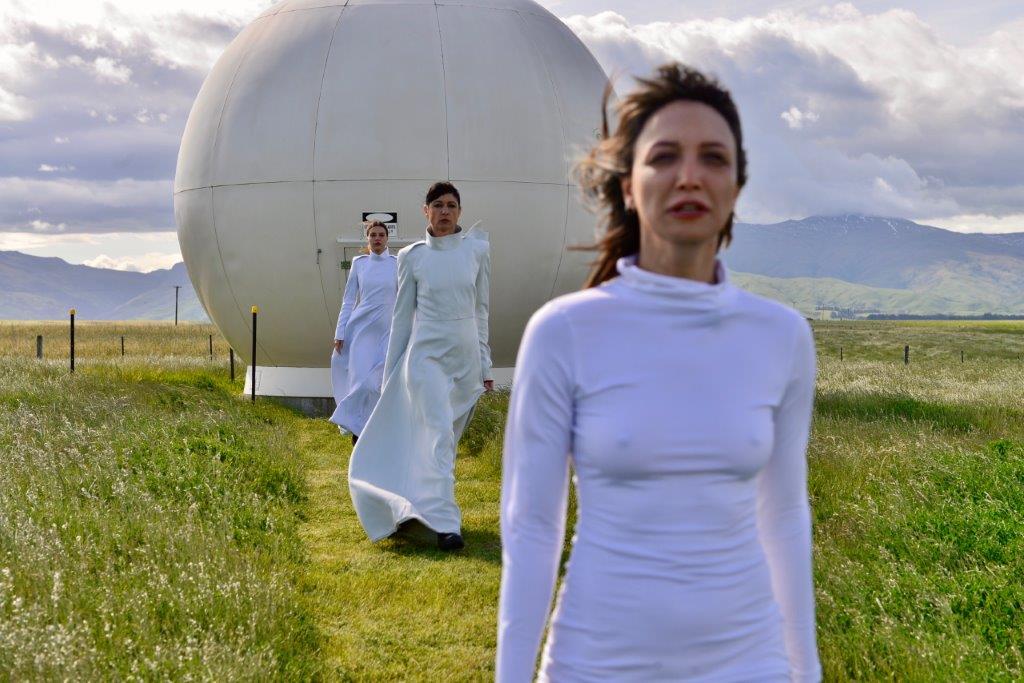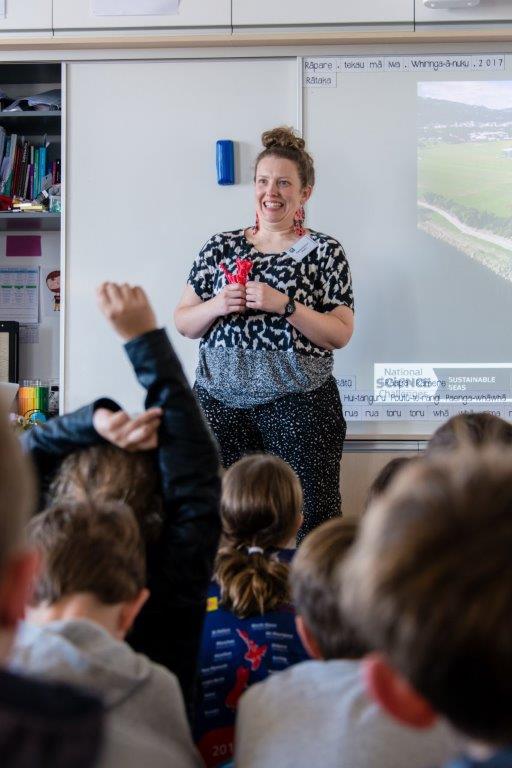If you think science and art have nothing in common, think again. At environmental science institute NIWA, it’s all about one inspiring the other.
The musician
It’s not only the hills that are alive with the sound of music – it’s the rain, the wind and the rise and fall of the tides.
In what is possibly a scientific first, NIWA hydrodynamics scientist Dr Graeme Smart commissioned nature to compose a modern symphony that he says sounds surprisingly harmonic.
Prompted by a recent conference request for presentations on hydrometeorology that were “original, artistic and interesting”, Dr Smart converted weather records into a musical score. A computer was then used to play the score with different musical instruments assigned to each of the weather components. The result was an instant conference hit.
Dr Smart used a month of data of Christchurch temperature, rainfall, windspeed and direction, Arthur’s Pass rainfall, Waimakariri River level and Sumner Head sea level for his creation. The hourly values were played at a rate of four per second.
“We’ve all seen graphs of the rise and fall of the tide but who has heard this effect?
“In this short symphony, the Arthur’s Pass rainfall sounds a bit like orchestral thunder in the hills, and the river sounds more like a bassoon. The rise and fall of the tide gives a regular beat in the background.”
“It’s a bit of fun that merges the boundaries between science and art. Nature in this case is actually the composer of this music with the measured environmental variables determining the pitches of the notes.
“If you are visually impaired you can now appreciate the pattern of daily variations in temperature by listening to it”.
Dr Smart was expecting an end result that was a lot more discordant, although he recommends playing it in surround sound for best effect.
As for the future of this innovation, there have been some novel ideas.
“One person suggested that instead of broadcasting a daily weather report, the forecast weather music could be played. I think it’s got potential.”
The dancer


Carol Brown was making a film in the Hawkdun Ranges of Central Otago when she first became fascinated by NIWA’s Atmospheric Research Centre near the tiny hamlet of Lauder.
On the last day of filming she decided to drop in, and after a tour of the property, her imagination set to work.
Lauder, 35km from Alexandra, is famed for its clear skies making it an ideal location for observing atmospheric chemistry and radiation. The station specialises in measuring CFCs, ozone, UV light levels and greenhouse gases and its scientists are part of an international network recording critical atmospheric data.
Carol Brown is a choreographer who could see the potential to use Lauder to film a dance work that would connect the language of science with the language of dance.
In December she brought a group of dancers and filmmakers to the station for a week, to explore the dimensions of space and the different ways they are used by scientists and dancers.
“I felt an immediate affinity with the scientists at Lauder; they are evidencing beyond what we see.
“Our project explores how the apparatus of surveying, cartography and data collection can speak to relationships with place. Using artistic methods, we hope to speak to the way data happens and also to explore how dancers become barometers of change.”
A 360ᵒ camera was mounted on a drone to film the dancers who interact with the landscape and the specialist instruments at the station.
“It allows the complexity of what the scientists are doing to be represented in a way that is also poetic.”
The result is Lungsong, described as a gathering and rallying of performers who create and exchange breaths in protest and lament.
The work will be shown at the Wanaka Festival of Colour in April where the Lauder scientists will be invited also take part offering their perspective during a “performance walk” to the lake.
The artist
The way Gabby O’Connor sees it, art is a delivery system for science.
“Science is complicated and it’s hard to make an end point – I think of art as a way to enter the conversation.”

Gabby is an installation artist but also a doctoral student based at NIWA’s Wellington site. She has twice been to Antarctica as part of a scientific research team and those experiences have contributed to a major work about how climate change is affecting oceans.
Called The Unseen, it is made from pieces of rope and cable ties shaped by communities and schoolchildren to communicate the connections between art, science and changing marine environments as they participate in the making of a contemporary art work.
The Unseen, funded by the Sustainable Seas National Science Challenge hosted by NIWA, was exhibited outdoors next to Nelson’s Suter Art Gallery last April and at that time measured about 50m by 25m, involved about 1600 people and 15km of rope.
Getting it to that stage involved five NIWA scientists travelling to workshops at 16 schools in the Marlborough region to talk about their research. The participants were then asked to “draw pictures” with the rope about something they had seen in the presentations or something they knew about the subject.
“This was all about creating future stakeholders, children teaching their families and giving them a little more confidence understanding the complexities of science.
“It was very successful in terms of generating interest and gauging the care of the natural environment by the people who live there.
“I am very mindful to do the science justice, but I also think about the audiences and how they process it.”
Gabby says art allows science to be experienced, not just read about.
“It can capture hearts and emotions, even a strong negative reaction is good because it means someone has thought about the work.”
Gabby is now developing The Unseen for another exhibition in Auckland in mid-2020.


